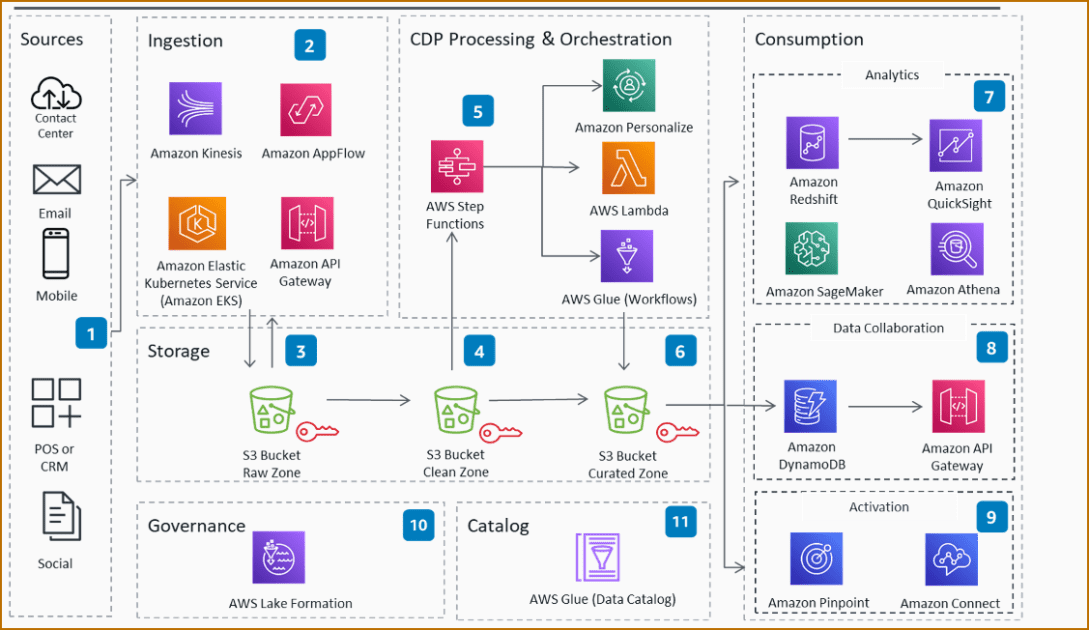Contents
Introduction
Cloud native, a term commonly encountered in modern software development, signifies a fundamental shift in how applications are constructed and deployed. At its core, being cloud native represents an approach where applications are intentionally designed to utilize cloud infrastructure, rather than a traditional development more of capitalizing on its scalability, adaptability, and efficiency. In this blog, we explore the world of cloud native development strategies. We are providing you into the fundamental principles and practices that empower organizations to make the most of cloud computing’s potential in crafting resilient, highly available, and easily maintainable software solutions.
Microservices Architecture
Microservices architecture is an essential part of cloud native development techniques and has several advantages for the creation and deployment of contemporary applications. This method divides applications into smaller, independent services that may be developed, deployed, and scaled independently. Because development teams can work on discrete components, this granularity promotes agility and accelerates up the release of new features and bug fixes. Microservices are also made to be stateless and simple to replace, which increases resilience in a cloud setting where errors can happen. Cloud native microservices also make leverage on containerization and orchestration tools like Kubernetes, providing automated management, seamless scalability, and effective resource use. Additionally, this design adheres to the continuous integration/continuous deployment (CI/CD) and DevOps concepts, enabling an optimized, automated development process.
Here is a statement by Google Cloud on Microservices
“At a granular level, microservices may be complex, but their function is very straightforward and critical for successful businesses.” Learn more about microservices and service meshes from @qhardy, head of editorial at Google Cloud → https://t.co/oXs2MxJ36x pic.twitter.com/l7OVC8fM6V
— Google Cloud (@googlecloud) November 6, 2019
Containers
Containers are portable, lightweight, and isolated environments used to run software programs. This makes deployment consistent and effective, which is appropriate for contemporary software development and deployment operations. They package everything required to run.
Containers play a crucial role in cloud native development approaches. They make it possible for programmers to develop an deploy softwares that take advantage of the scalability, agility, and flexibility of cloud environments. Developers may produce uniform and portable software units that work easily across a variety of cloud platforms by isolating applications and their dependencies into containers. This is in line with cloud native concepts like microservices architecture, continuous integration and continuous deployment (CI/CD), and auto-scaling, enabling businesses to quickly create, release, and grow cloud native apps. Furthermore, their capability to effectively coordinate and manage application deployments.
DevOps
A cloud native development strategy that incorporates DevOps offers an innovative methodology where cloud technologies and DevOps processes merge. Microservices, containers, and orchestration, all of which abide to DevOps principles, are essential to cloud native development. Within this framework, DevOps teams are able to fully automate all phases of the software development lifecycle, from development and testing through deployment and monitoring. DevOps practices like continuous integration/continuous deployment (CI/CD) enable quick and reliable application delivery, while cloud native solutions like Kubernetes and serverless computing improve scalability and resource efficiency.
As a result, development cycles are shortened, time to market is accelerated, reliability elevates, and operational constraints are minimized. DevOps in a cloud native context is a crucial method for modern software development due to how it effortlessly combines cost-effective DevOps strategies with the pay-as-you-go model and on-demand resources of the cloud.
APIs
In order to enable smooth integration and communication between microservices and cloud native apps, APIs are fundamental to cloud native development techniques. They support modular development approaches by providing a standardized and scalable way to provide functionality, data, and services. Data access and manipulation are made simpler by cloud native APIs, which are frequently created utilizing concepts like RESTful architecture or technologies like GraphQL. They enhance agility and scalability, which are essential for cloud native applications, by abstracting away infrastructure complexities. As an integration agent between microservices and other cloud native components, APIs are crucial in ensuring interoperability across modern application ecosystems. APIs are a crucial component of any cloud native development strategy because of their flexibility and modularity, which enable developers to create scalable, robust, and effective cloud native apps that can adjust to changing business needs.
Serverless Computing
A key element of cloud native development methodologies is serverless computing. By eliminating server management from the equation, it streamlines application deployment. Developers merely concentrate on the code, which improves agility and scalability. With its function-based methodology, serverless supports modularity and makes maintenance simpler. Its cost-effectiveness lowers resource idle expenses because you only pay for actual compute consumption. As cloud providers manage infrastructure for high availability, it also enhances fault tolerance. The ability to build and deploy quickly supports the DevOps culture. For instance, In a ride-sharing app like Uber, serverless computing handles tasks like fare calculation, driver assignment, and notifications, promoting scalability and efficiency in a cloud native development strategy. Where the application doesn’t need to provision and manage a specific server to process the request.

Reference picture of modern approach to implementing the serverless Customer Data Platform
Credits: AWS
Orchestration
A key component of a cloud native development strategy is orchestration, which supports the concepts of scalability, flexibility, and resilience. Orchestration demonstrates the automated administration of containers, microservices, and infrastructure parts in the context of cloud native applications, assuring effective deployment and scaling.
Platforms for container orchestration, like Kubernetes, have emerged as a pillar of cloud native development. They automate processes like load balancing, self healing capabilities, scalability, and container deployment. The development and deployment pipeline is streamlined by this automation, which frees engineers to concentrate on producing code rather than maintaining infrastructure. The dynamic distribution of resources made possible by orchestration also helps programs adapt to shifting traffic and workloads. This elasticity guarantees high availability, cost-effectiveness, and optimal resource utilization. It also promotes the division of large monolithic apps into smaller.
During peak shopping seasons, Kubernetes can automatically scale up the containerized services to handle increased traffic. When the traffic subsides, it scales them down to save resources.
Service Mesh
A service mesh is a crucial component of cloud native development strategies. Microservices-based apps are widely used in cloud native designs, which enhances their management and observability. By providing a specific infrastructure layer for managing communication between services, service mesh enables capabilities like load balancing, security, and traffic control. By facilitating communication between services, it frees up developers to focus on business logic rather than networking difficulties. In addition, service mesh enables incremental deployments and canary releases, lowering risk and downtime during updates. Its ability to collect metrics and logs provide helpful information for diagnosing and upgrading applications, ensuring them efficient operation in shifting cloud environments. For understanding, A canary release strategy, which gradually directs a small portion of user traffic to the new version of a service while tracking its performance, can be enabled by the service mesh during a software update. The service mesh can automatically to redirect traffic to the stable version if complications arise minimizing disruptions.
Watch the video for a clear understanding what canary testing is ?
CI/CD
CI/CD automates the entire software development lifecycle, from code integration through deployment, as part of a cloud native development approach. Scalability and flexibility are increased by using cloud services like serverless computing and containerization. Automatic scalability, versioning, and rollback are made possible by software like Jenkins X and GitLab CI/CD, which smoothly connect with cloud services. As it permits modular, independent deployments, CI/CD promotes microservices design in a cloud native setting. This promotes agility. This method fully embodies the ideals of cloud native development since it accelerates development, improves reliability, and optimizes resource utilization. While preserving high availability and dependability in the cloud native environment, it makes sure that software upgrades are continuously tested and deployed, facilitating faster delivery of new features and improvements.
IaC
A key element of a cloud native development approach is infrastructure as code (IaC). Instead of using manual settings, it entails designing and supplying infrastructure and resources through code. IaC has unique benefits when used in a cloud native environment. By enabling developers to quickly spin up or pull down resources as needed, it supports the scalability of cloud native principles of elasticity. Additionally, it improves consistency and reproducibility, making sure that surroundings at various phases of development appropriately reflect one another. IaC also makes it easier for cross-functional teams to collaborate because code-based infrastructure can be shared and version-controlled. Additionally, it encourages automation, making it possible to deploy containers and microservices, both of which are essential for creating cloud native apps. Terraform, AWS CloudFormation, Kubernetes YAML, Docker Compose, Serverless Framework, Pulumi are some IaC tools.
Security Practices
A cloud native development strategy must include security policies to secure apps and data in dynamic cloud environments. By implementing in place stringent access rules and constant authentication, adopting a Zero Trust approach improves security. The explosion radius of potential breaches is reduced by isolation and segmentation made possible by containerization and microservices. For locating and addressing vulnerabilities, regular security audits, vulnerability scanning, and penetration testing are essential. Automated DevSecOps pipelines incorporate security into the development process, facilitating quick vulnerability discovery and patching. Further strengthening protections against data breaches and unwanted access are encryption, effective identity management, and rigorous API security. To protect infrastructure and apps that are cloud native, a security-centric approach is necessary.
Conclusion
A comprehensive cloud native development strategy covers a wide array of critical components beyond those explored here. Agility is at the forefront, enabling rapid adaptation to changing business needs. Monitoring and observability provide the crucial insights needed to optimize performance and troubleshoot issues in real-time. Databases, too, play a pivotal role in maintaining data integrity and accessibility within dynamic cloud native ecosystems.
Successful companies understand that a holistic cloud native approach is not merely a technological shift but a cultural one, emphasizing collaboration, automation, and a relentless commitment to enhancing software delivery. As technology continues to evolve, embracing these strategies becomes increasingly essential for organizations aiming to thrive in the digital age.




